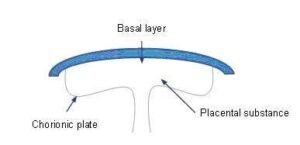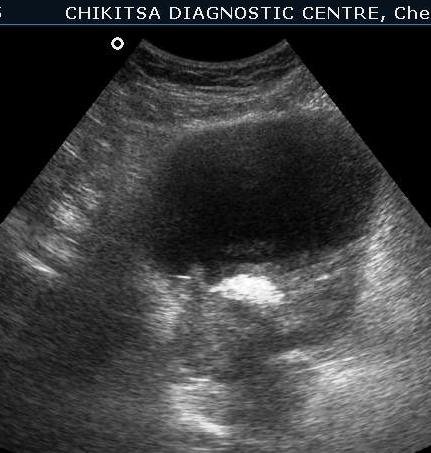
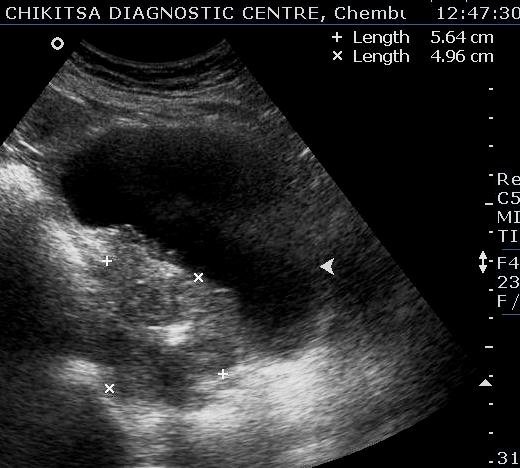
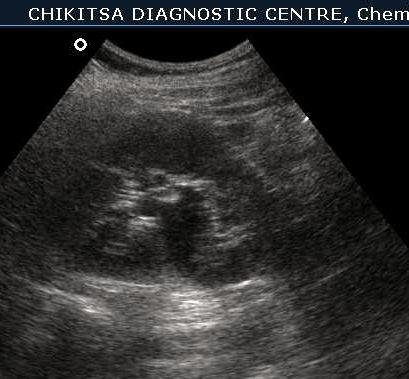
5 5 cm x 5 cm size ill-defined heterogeneous area in the posterior wall of the urinary bladder which is thickened and measures upto 0.6 cm in thickness. Large solid calcific areas are noted in the thicknened portion of the wall urinary bladder. Suggestive of schistosomiasis of the urinary bladder (possibly with malignant change)
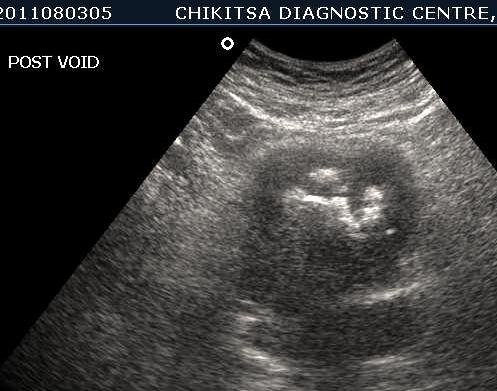
Left kidney shows Hydronephrosis
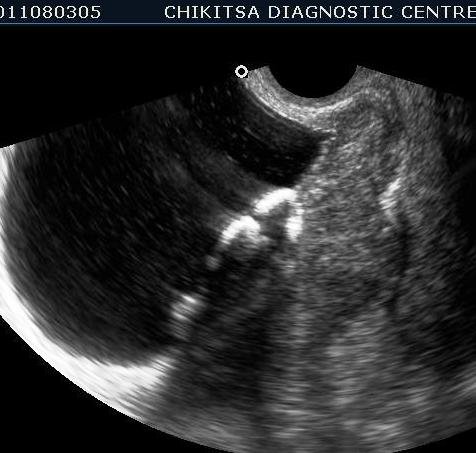
Left kidney shows Hydronephrosis
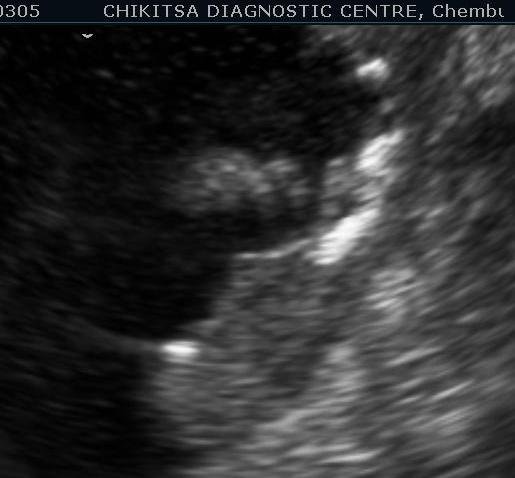
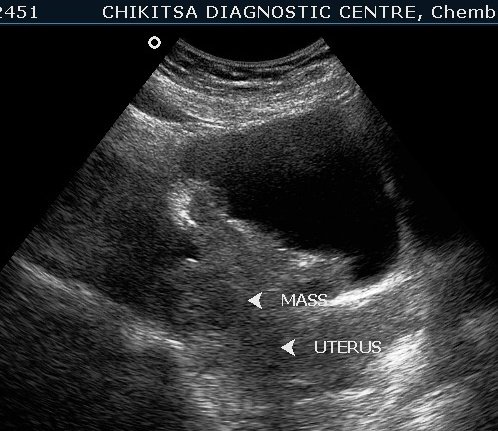
Lesion in the wall of the urinary bladder has increased in size. Calcific areas are noted. Urinary bladder malignancy ( confirmed by histopathology), possibly following schistosomiasis.
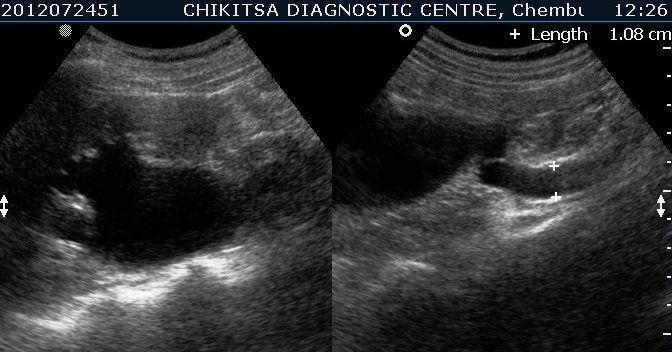

The lesion in the wall of the urinary bladder has increased in size. Calcific areas are noted. Urinary bladder malignancy ( confirmed by histopathology), possibly following schistosomiasis
DISCUSSION
Genitourinary schistosomiasis is caused by Schistosoma haematobium, a fluke endemic to Africa and the Middle East, causing significant morbidity and mortality in these regions. It can also occur elsewhere due to travel or immigration.
Schistosoma haematobium, one of the five fluke species responsible for most human schistosomiasis, is the only species that infects the genitourinary system.
Initially, the infection affects the bladder and ureters, progressing to the kidneys and genital organs in later stages.
Larvae of Schistosoma haematobium are released from snails into water and penetrate human skin exposed to infected water, then migrate to the lungs and liver where they mature. Adult worm pairs migrate to the pelvic veins. Eggs deposited in the bladder wall vessels induce a granulomatous response, leading to polypoid lesions.
Ultrasound features include mucosal irregularity, polypoidal bladder wall thickening, inflammatory pseudopolyps (with increased vascularity on Doppler), ureteral and pelvicalyceal system dilation (particularly if the ureterovesical junction is involved), stricture, and curvilinear dense wall calcification. Later, bladder capacity may be reduced; rarely, ureteritis cystica occurs.
The bladder wall calcification results from calcification of ova deposited in the bladder wall vessels. The calcification spreads around the bladder wall, potentially encircling it completely and appearing as a curvilinear ring. The bladder wall becomes fibrotic, and later, bladder capacity may be reduced.
Loss of calcification in previously calcified areas on follow-up imaging raises suspicion for bladder carcinoma.
Heavy egg deposits in the bladder mucosa and submucosa act as a mechanical irritant to the urothelium, inducing chronic inflammatory lesions, which cause hyperplasia, squamous metaplasia, and eventually carcinoma.
Several mechanisms are thought to contribute to this malignant transformation.
References
1) Radiographics. 2012 Jul-Aug;32(4):1031-46.
2) Kuper H, Adami HO, Trichopoulos D. Infections as a major preventable cause of human cancer. J Intern Med. 2000;248:171-183.
3) Cheever A W. Schistosomiasis and neoplasia. J Natl Cancer Inst. 1978;61:13-18.
4) Cheever A W, Kuntz R E, Moore J A, Hang T C. Pathology of Schistosoma haematobium infection in the Capuchin monkey. Trans R Soc Trop Med Hyg. 1988;82:107-111.
5) Christie J D, Crous D, Kelada A S, Anis-Ishak E, Smith J H, Kamel I A. Patterns of Schistosoma haematobium egg distribution in the human urinary tract. III. Cancerous lower urinary tracts. Am Trop Med Hyg. 1986;35:759-764
6) Hicks R M, James C, Webbe G. Effect of Schistosomiasis haematobium and N-butyl-N-(4-hydroxybutyl)nitrosamine on the development of urothelial neoplasia in baboon. Br J Cancer. 1980;42:730-755
7) Ishikawa J, Xu H J, Hu X S, Yandell D W, Maeda S, Kamidono S, Benedict W F, Takahashi R. Inactivation of the retinoblastoma gene in human bladder and renal-cell carcinomas. Cancer Res. 1991;51:5736-5743
8) Knowles M A, Williamson M. Mutation of H-ras is infrequent in bladder cancer: confirmation by single-strand-conformation-polymorphism analysis, designed restriction-fragment-length polymorphisms, and direct sequencing. Cancer Res. 1993;53:133-139.
9) Sidransky D, Von Eschenbach A, Tsai Y C, Jones P, Summerhayes I, Marshall F, Pual M, Green P, Vogelstein B. Identification of the p53 gene mutations in bladder cancers and urine samples. Science. 1991;252:706-709




